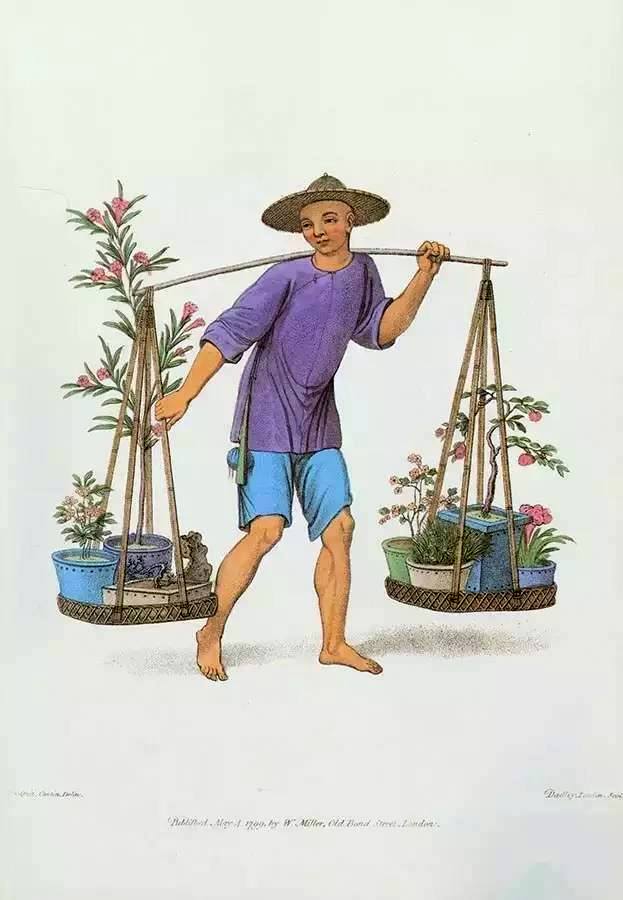
|
| George Henry Mason
(1770-1851) was a British army officer, Major in the late
102nd Regiment of Foot
(Royal Madras Fusiliers) raised by the East
India Company, 1795, and then Lietenant-Colonel in 1801. Mason had travelled to Canton in 1789.
It was one of only two cities in China that outsiders could legally visit at the time, and Mason relished the
opportunity to provide "partial instruction and general amusement" about an "exotic" foreign land to a fascinated
but parochial audience of armchair tourists in England. He became an author of two influential
works, The Costume of China (1800) and The Punishments of China (1801).
1 |

|
|
"A Porter With Fruit Trees and Flowers," Plate XVI in George Henry Mason's The Costume
of China, Illustrated by Sixty Engravings: With Explanations in English and French. Hand-tinted print.
"16" in upper right. "Pu Quà, Cantòn, Delin." in lower left. "Published May 4, 1799 by
W. Miller, Old Bond Street, London" in lower center and "Dadley, London, Sculpt." [Engraver] in lower right.
Sixty prints depict scenes of Chinese craftsmen and tradesmen at work and other figures. The Preface is dated
May 4, 1800, Nass House, Glocestershire. This work became one of the most popular works on China in early
nineteenth century Europe. [For instance, see the porter's illustration use 3 years later in
Johann Heinrich Seidel's work Der Frühlings- und Sommergärtner.] The English text of the plate of interest to us here is: "The Chinese are fond of flowers, and of dwarf fruit-trees, which grow in pots of porcelain, and are placed either upon stands, or the railing of their courtyards: where may be seen not only diminutive orange, peach, and other fruit-trees, but also firs and oaks, stinted [sic] in their growth to two feet, by an ingenious, though certainly unnatural contrivance, and exhibiting all the appearances of maturity or decay." The French text of this is: "Porteur De Fleurs Et D'Arbres Fruitiers. Les Chinois aiment beaucoup les fleurs, et les arbres fruitiers nains, qui viennent dans des vases de porcelaine, et sont placés sur des piedestaux, ou sur les balustrades de leur cours. On y voit non seulement les orangers, les pêches, et autres arbres fruitiers en petit, mais encore des sapins et des chênes, arrêtés dans leur croissance à la hauteur de deux piés, par un procédé ingénieux quoique contraire à la nature, en faisant voir tous les symptômes de la maturité et du dépérissement."
The Artist:
Pu-Quà, a local artist in Canton who set up the first workshop there to specifically
cater to Western customers. This workshop produced large sets of watercolors, many of which depicted the
occupations and trades of Canton, used in Mason's book Costume of China, which itself was influential on new
Chinese styles. Mason identified Pu Qua as the artist of some paintings he purchased when as a professional
soldier Mason was in Canton around 1790.
2 |
|
1 The Royal military calendar, or Army service and commission book,
pg. 316. |